There was once a Victorian warehouse on the site of this pub, occupied by manufacturing chemists, from the early 1900s into the 1950s. There was also a sizeable chemical factory next door. The chemical industry in Liverpool began in nearby Lime Street, originally called Lime Kiln Lane. The site of this bar occupies a car park where there was once a Victorian warehouse. In the 1890s, it housed brass founders and the Monserrat Lime Juice Company Stores
Framed prints and text about The Lime Kiln.
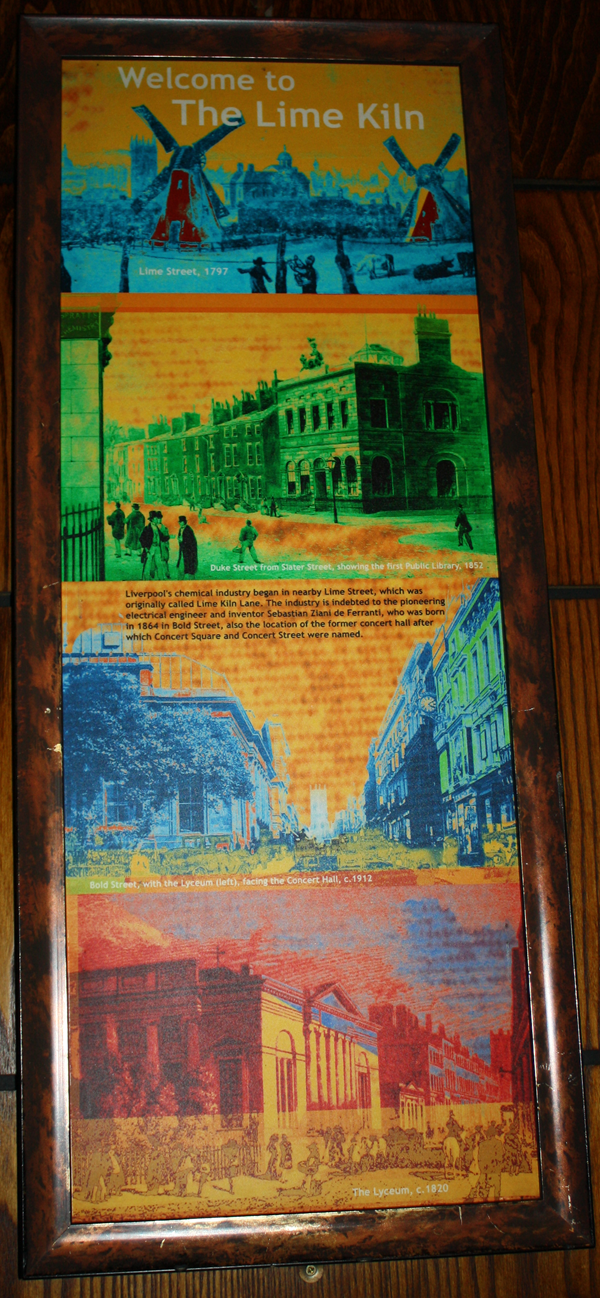 .
.
Framed prints of Liverpool-born liberal politician and Prime Minister William Ewart Gladstone. Also –Gladstone’s birth place at 312 Rodney Street.
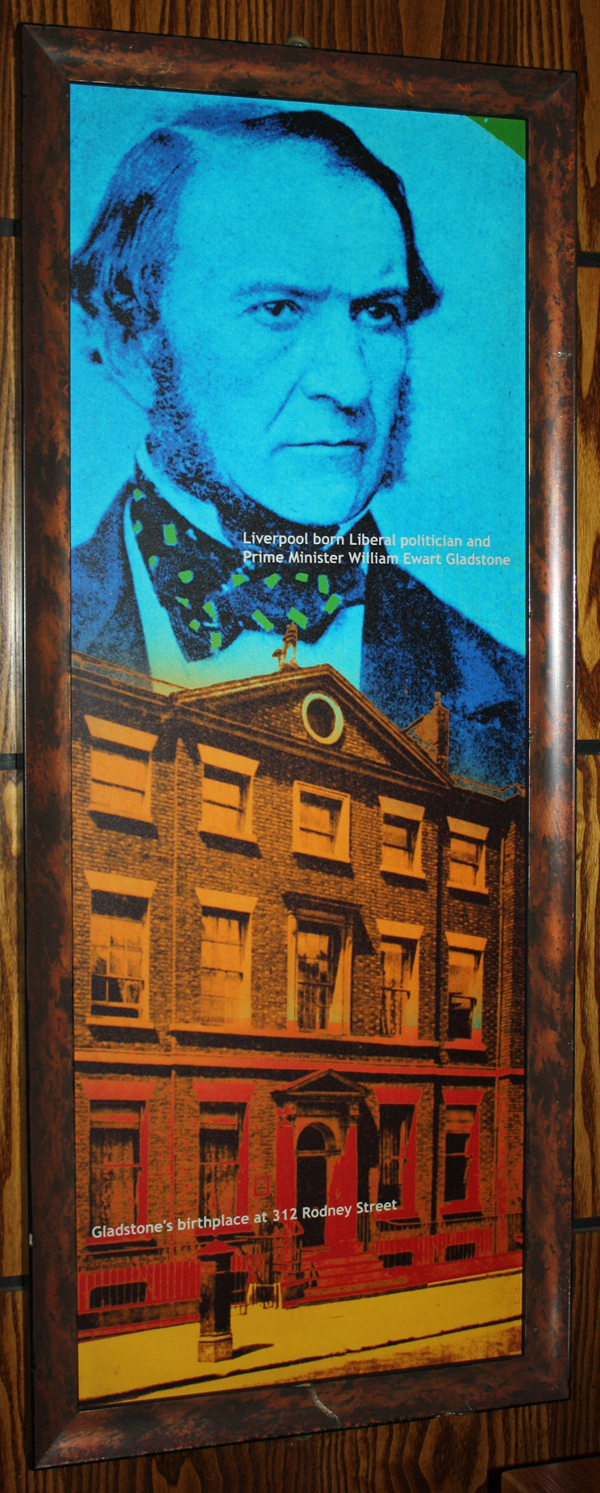
Framed prints and text about an historic murder in the area.
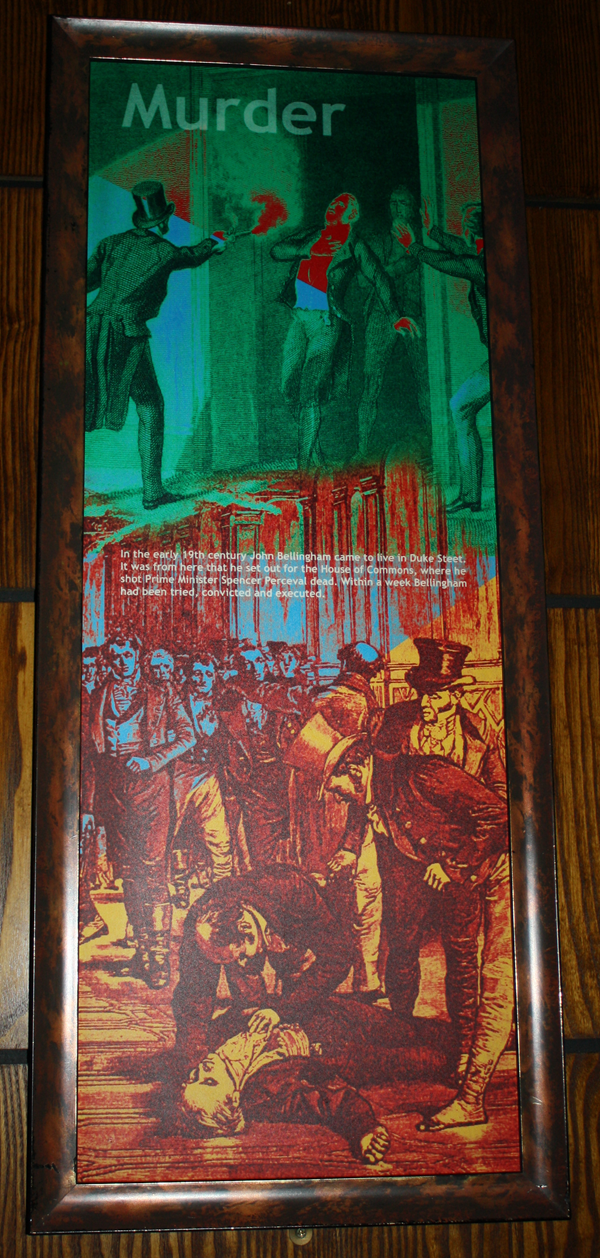
The text reads: In the early 19th century John Bellingham came to live in Duke Street. It was from here that he set out for the House of Commons, where he shot Prime Minister Spencer Perceval dead. Within a week Bellingham had been tried, convicted and executed.
Framed photographs and text about Beryl Bainbridge.
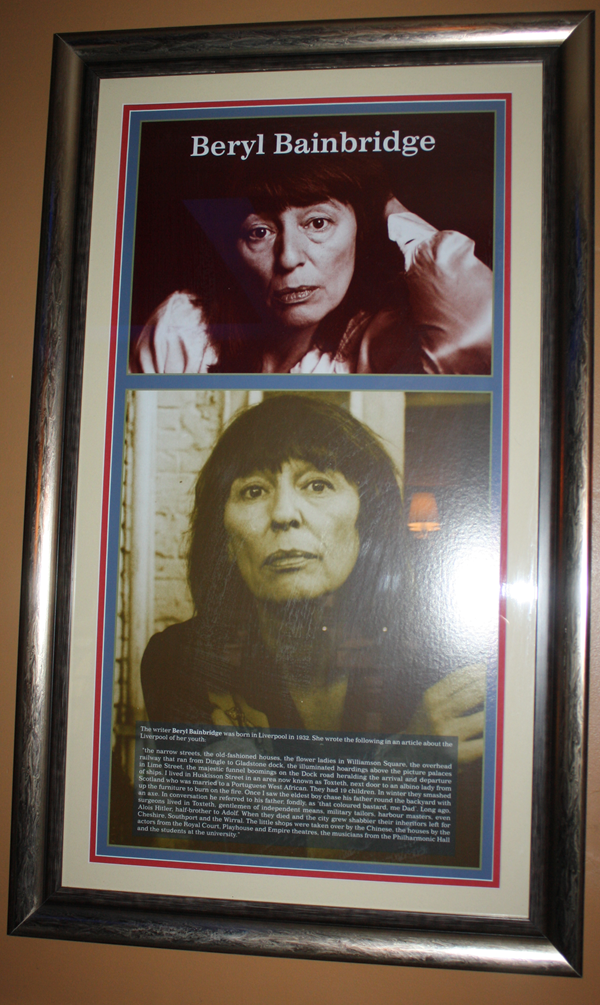
The text reads: The writer Beryl Bainbridge was born in Liverpool in 1932. She wrote the following in an article about the Liverpool of her youth:
“the narrow streets, the old-fashioned houses, the flower ladies in Williamson Square, the overhead railway that ran from Dingle to Gladstone dock, the illuminated hoardings above the picture palaces in Lime Street, the majestic funnel boomings on the Dock road heralding the arrival and departure of ships. I lived in Huskisson Street in an area now known as Toxteth, next door to an albino from Scotland who was married to a Portuguese West African. They had 19 children. In winter they smashed up the furniture to burn on the fire. Once I saw the eldest boy chase his father round the backyard with an axe. In conversation he referred to his father, fondly, as ‘that coloured bastard, me Dad’. Long ago, surgeons lived in Toxteth, gentlemen of independent means, military tailors, harbour masters, even Alois Gitler, half-brother to Adolf. When they died and the city grew shabbier their inheritors left for Cheshire, Southport and the Wirral. The little shops were taken over by the Chinese, the houses by the actors from the Royal Court. Playhouse and Empire theatres, the musicians from the Philharmonic Hall and the students university.”
A collection of photographs and text about Bessie Braddock and George Melly.
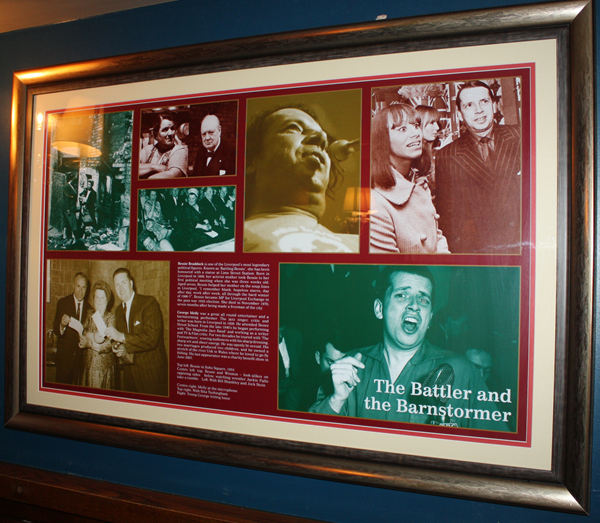
The text reads: Bessie Braddock is one of the Liverpool’s most legendary political figures. Known as ‘Battling Bessie’, she has been honoured with a statue at Lime Street Station. Born in Liverpool in 1899, her activist mother took Bessie to her first political meeting when she was three weeks old. Aged seven, Bessie helped her mother on the soup lines in Liverpool, “I remember blank, hopeless stares, day after day, week after week, all through the hard winter of 1906-7”. Bessie became MP for Liverpool exchange in the post-war 1945 election. She died in November 1970, seven months after being made a freeman of the city.
George Melley was a great all round entertainer and a barnstorming performer. The jazz singer, critic and writer was born in Liverpool in 1926. He attended Stowe Street School. From the late 1940’s he began performing with ‘The Magnolia Jazz Band’ and working as a writer and TV & Film critic. For two decades he toured with ‘The Feetwarmers’, wowing audiences with his sharp dressing, sharp wit and sheer energy. He was openly bi-sexual. His two marriages produced two children, and he owned a stretch of the river Usk in Wales where he loved to go fly fishing. His last appearance was a charity benefit show in June 2007.
Top left: Bessie in Soho Square, 1954
Centre left: top, Bessie and Winston – look-alikes on opposing sides
Below, watching wrestler Jackie Pallo take a tumble
Left: With Bill Shankley and Jock Stein
Centre right: Melly at the microphone
Top right: With Rita Tushingham
Right: Young George letting loose.
Framed photographs and text about Professor Codman.
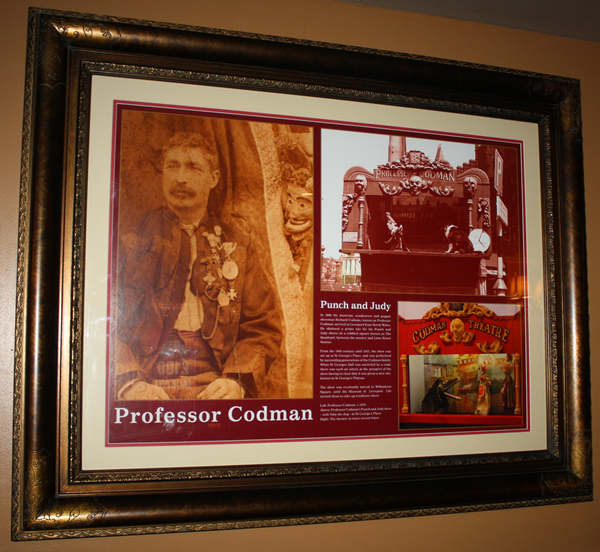
The text reads: In 1860 the musician, woodcarver and puppet showman Richard Codman, known as Professor Codman, arrived in Liverpool from North Wales. He obtained a prime site for his Punch and Judy shows on a cobbled square known as ‘The Quadrant’, between the market and Lime Street Station.
From the 19th century until 1957, the show was set up at St George’s Place, and was performed by succeeding generations of the Codman family. When St George’s hall was encircled by a road, there was such an outcry at the prospect of the show having to close that it was given a new site, known as the St. George’s Plateau.
The show was eventually moved to Williamson Square, until the Museum of Liverpool life invited them to take up residence there.
Left: Professor Codman, c.1870
Above: Professor Codman’s Punch and Judy show – with Toby the dog – in St George’s Place
Right: The theatre in more recent times.
Framed drawings and text about Liverpool Castle.
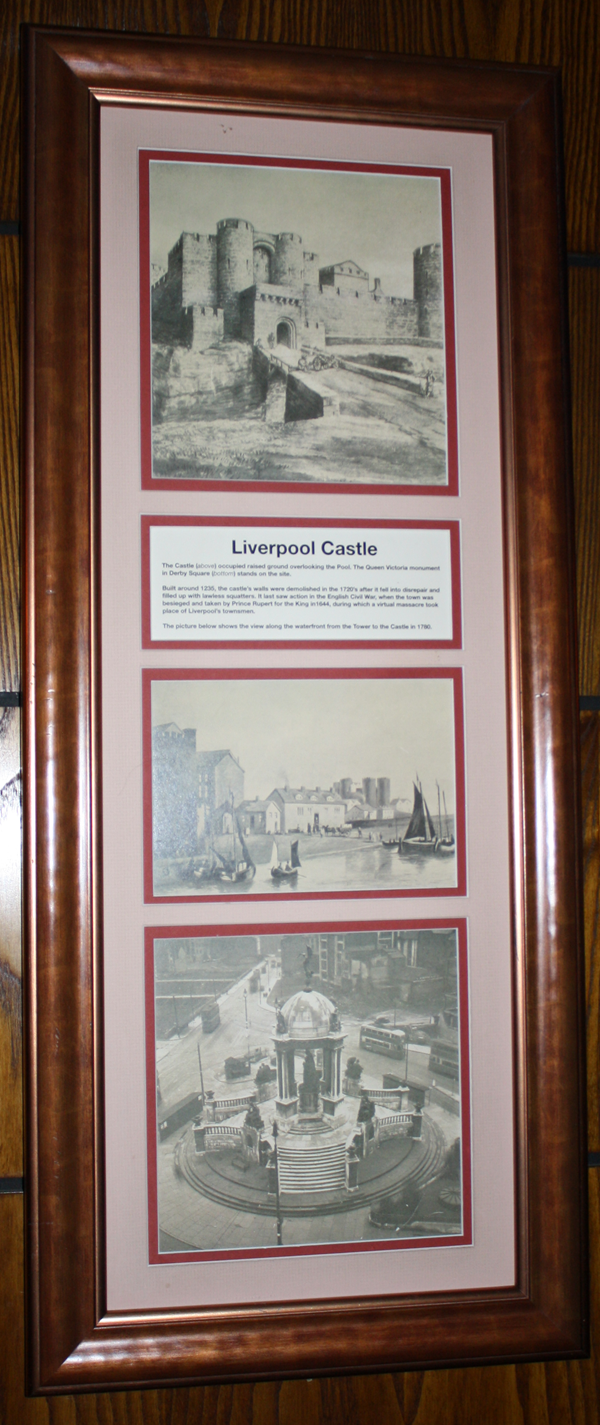
The text reads: The castle (above) occupied raised ground overlooking the pool. The Queen Victoria monument in Derby Square (bottom) stands on the site.
Built around 1235, the castle’s walls were demolished in the 1720’s after it fell into disrepair and filled up with lawless squatters. It last saw action in the English Civil War, when the town was besieged and taken by Prince Rupert for the King in 1644, during which a virtual massacre took place of Liverpool’s townsmen.
The picture below shows the view along the waterfront from the Tower to the Castle in 1780.
Framed drawings and text about The Tower Liverpool.
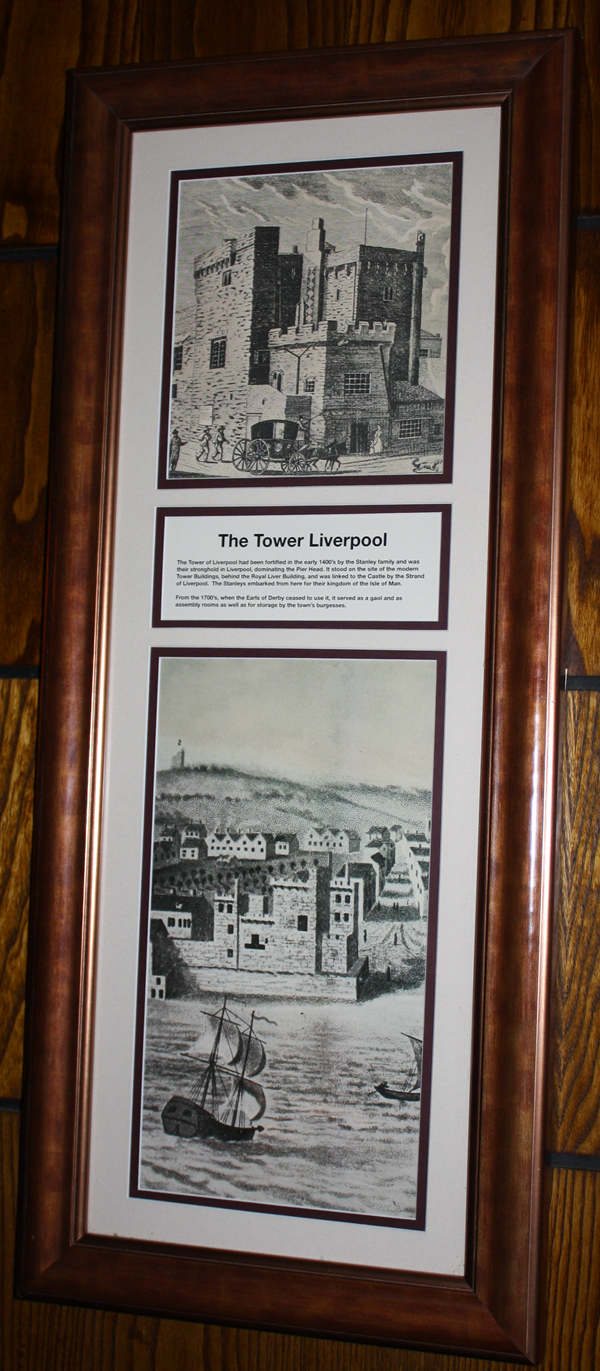
The text reads: The Tower of Liverpool had been fortified in the early 1400’s by the Stanley family and was their stronghold in Liverpool, dominating the Pier Head. It stood on the site of the modern Tower Buildings, behind the Royal Liver Building, and was linked to the Castle by the Strand of Liverpool. The Stanleys embarked from here for their kingdom of the Isle of Man.
From the 1700’s, when the Earls of Derby ceased to use it, it served as a gaol and as assembly rooms as well as for storage by the town’s burgesses.
A framed print, drawing and text about the Stanley family.
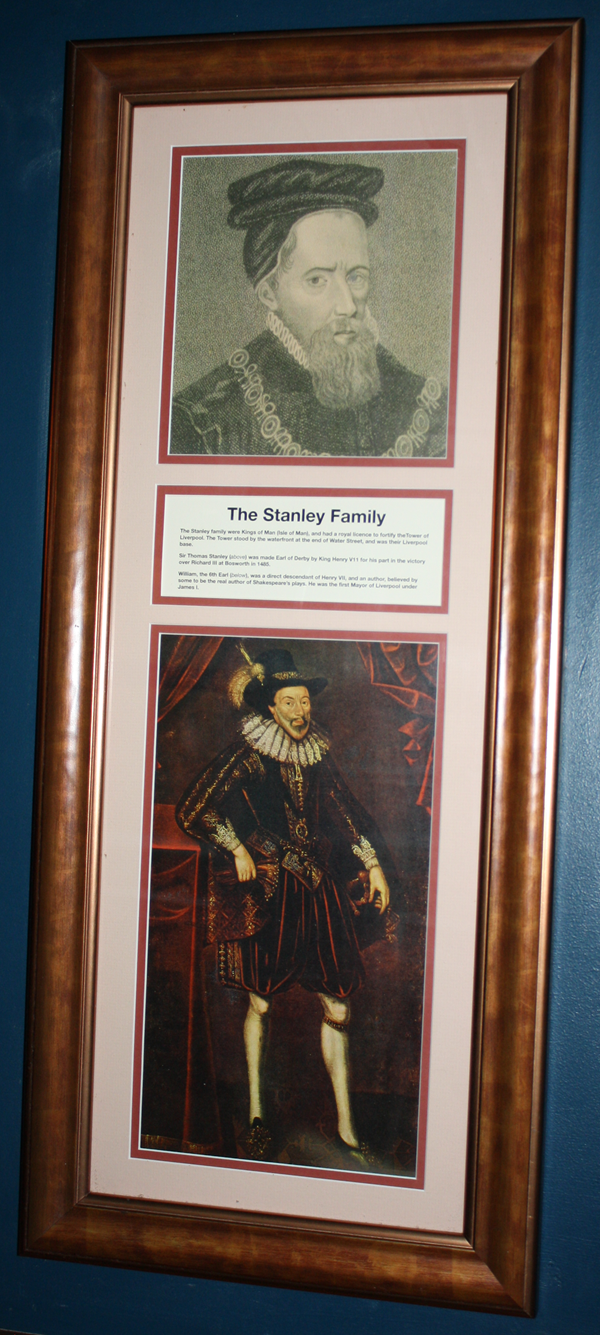
The text reads: The Stanley family were Kings of Man (Isle of Man), and had a royal licence to fortify the Tower of Liverpool. The Tower stood by the waterfront at the end of Water Street, and was their Liverpool base.
Sir Thomas Stanley (above) was made Earl of Derby by King Henry VII for his part in the victory over Richard III at Bosworth in 1485.
William, the 6th Earl (below), was a direct descendant of Henry VII, and an author, believed by some to be the real author of Shakespeare’s plays. He was the first Mayor of Liverpool under James I.
A framed drawing of Liverpool as it appeared in around 1680. The castle is on the right and the tower in the centre.
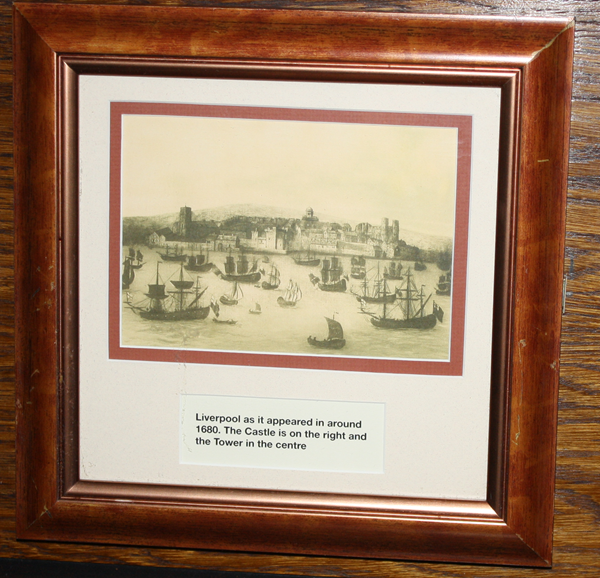
A framed drawing of Wolstenholme Square, in 1858, when it was a fashionable residential area, overlooking the town.
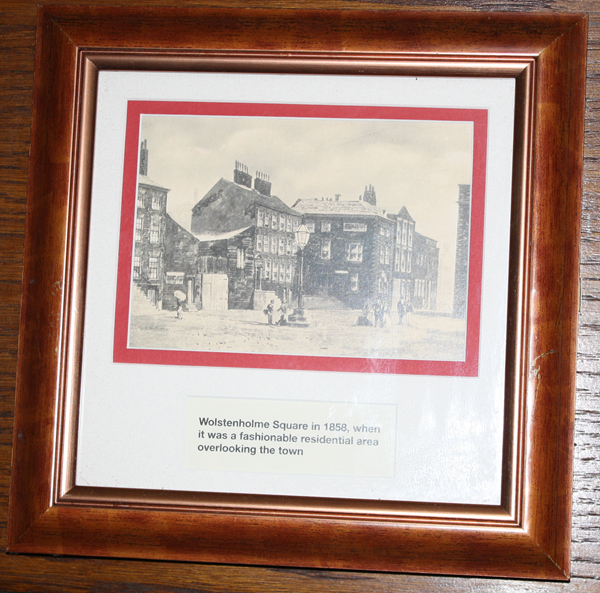
Framed drawings, photograph and text about Liverpool – a city of culture.
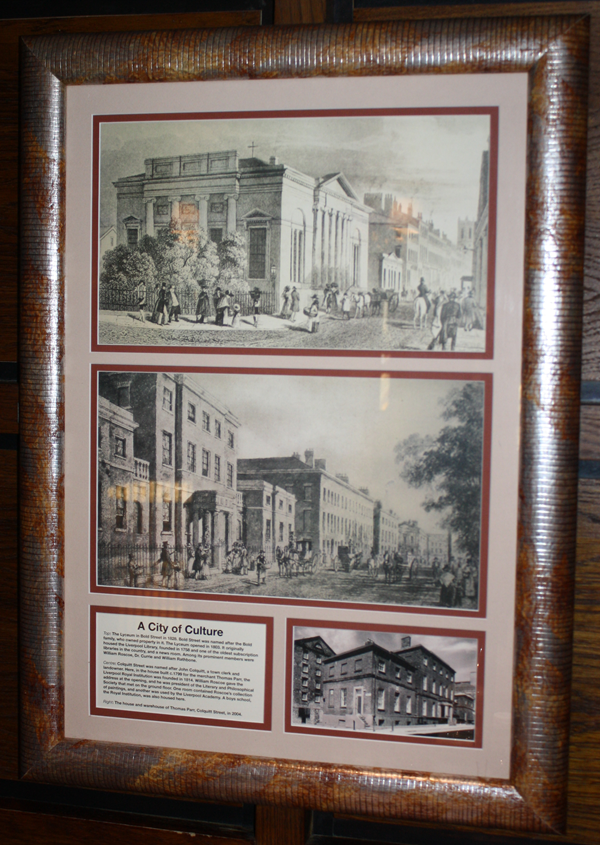
The text reads: Top: The Lyceum in Bold Street in 1828. Bold Street was named after the Bold family, who owned property in it. The Lyceum opened in 1803. It originally housed the Liverpool Library, founded in 1758 and one of the oldest subscription libraries in the country, and a news room. Among its prominent members were William Roscoe, Dr. Currie and William Rathbone.
Centre: Colquitt street was named after John Colquitt, a town clerk and landowner. Here, in the house built c. 1799 for the merchant Thomas Parr, the Liverpool Royal institution was founded in 1814. William Roscoe gave the address at the opening, and he was the president of the Literary and Philosophical Society that met on the ground floor. One room contained Roscoe’s collection of paintings, and another was used by the Liverpool Academy. A boys school, the Royal Institution, was also housed here.
Right: The house and warehouse of Thomas Parr, Colquitt Street, in 2004.
A framed drawing of The Ugly Club, an all-male drinking and dining club, patronised mainly by heavy-drinking merchants.
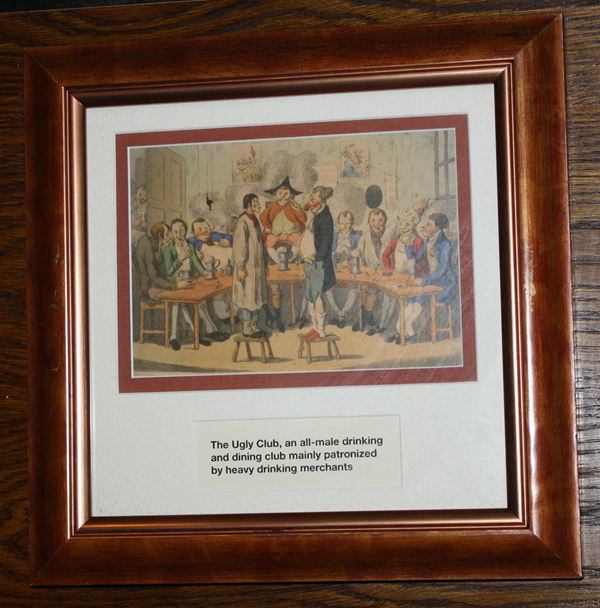
Framed posters advertising the Liverpool Exhibition of 1913 and Industrial Liverpool and Birkenhead.
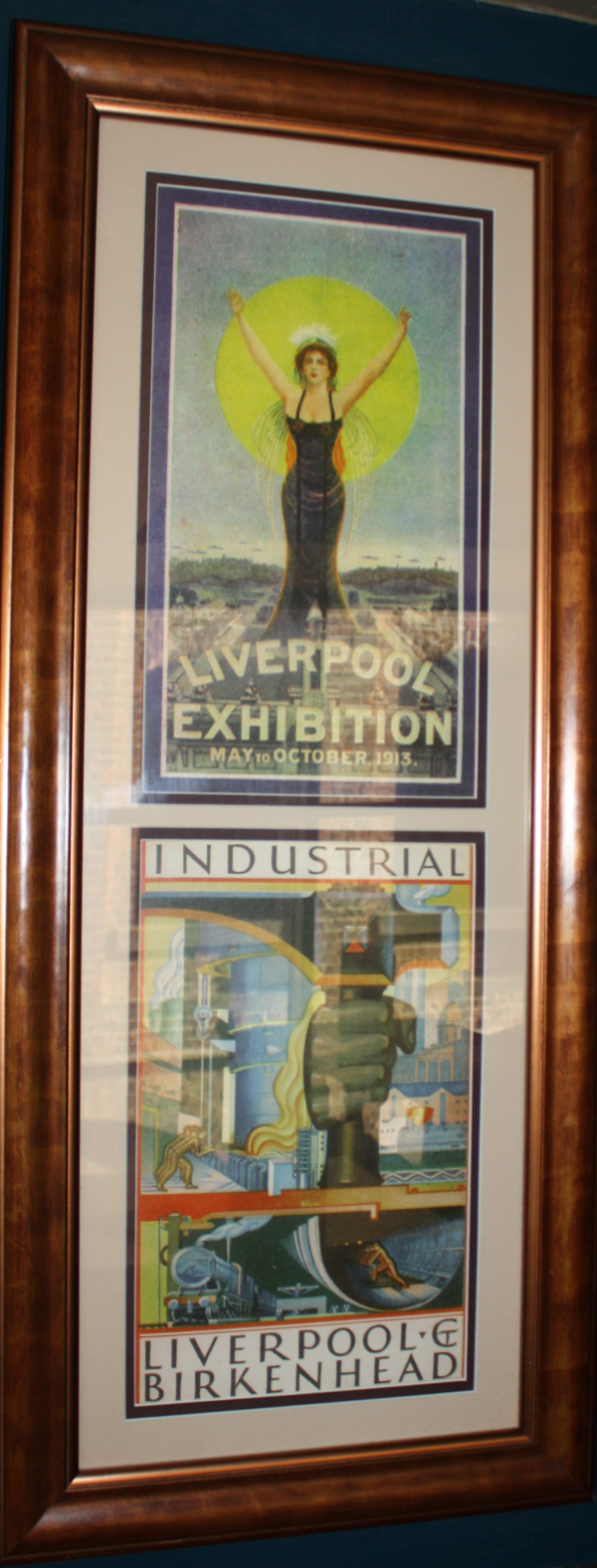
Artwork inside The Lime Kiln entitled Something of Nothing, created by Asha Munn.
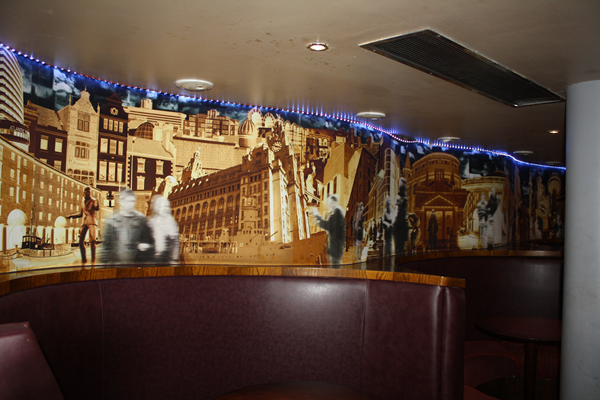
The artist describes the piece as “to the people who stop and stare as all the others walk on by.”
External photograph of the building - main entrance.
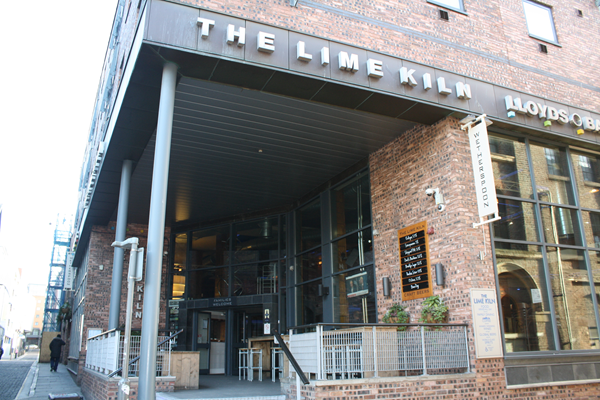
If you have information on the history of this pub, then we’d like you to share it with us. Please e-mail all information to: pubhistories@jdwetherspoon.co.uk